|
Ben Daitz According to Albert Einstein, “The only thing that you absolutely have to know is the location of the library.” No doubt Einstein was confident about the locations of many libraries, but so too are the folks who live in rural New Mexico, in the villages of Vallecitos, El Rito, Dixon, Abiquiu, Magdalena, and Glenwood, and other small communities across this state, and the country. They know exactly where their libraries are, and that they are essential to the educational and social fabric of their communities. I can tell you about New Mexico’s rural libraries because Shel Neymark told my wife, Mary Lance, and me stories about several of them at a party, during a break while playing music together. Neymark, in his early 70’s, is a jazz fiddle player, a nationally known ceramic artist, and community organizer, who was honored this year, along with 9 other “New Mexicans who made a difference.” Shel Neymark’s difference is his creation of The New Mexico Rural Library Initiative, which prompted the legislature to establish a New Mexico Rural Library Endowment Fund, a hoped-for permanent support base for the 55 rural and tribal libraries in New Mexico. . Mary and I are documentary filmmakers--- and bibliophiles--- and in the dreary doldrums of the pandemic, a trip to a rural library felt like a nice break, and maybe a good story. The next week, we booked it---we met Shel at the Vallecitos Library. Vallecitos The road to the Vallecitos winds through the high desert, sage covered mesas of Northern New Mexico, then gradually ascends, curving above a string of little valleys--- Vallecitos, in Spanish. The village of Vallecitos is nestled in the last of the valleys, and if you miss the turn-off, the paved road ends soon after, at the boundary of the Carson National Forest, where the villagers’ livelihoods logging that forest ended decades ago. The narrow lane to the library, past eroding adobe walls framed by stately old cottonwoods is a starkly beautiful picture of hard times. Vallecitos is one of the most economically depressed communities in a state with the same problem. The 2020 census counted 238 people living in and around this village, and they are an aging population. There are few children here, and the closest elementary school is 25 miles over a mountain pass, the closest grocery store about 50 miles. There is no cell phone service, the internet is absent or limited, but there are 2 landlines, real telephones--- one at the firehouse, and the other at the Vallecitos Community Center and Library. Ernie Giron grew up here, moved away and came back. He is a wiry, ruggedly handsome, mustachioed, man in his mid 60’s, who has been a logger, fire-fighter, musician, and former Chief of the Vallecitos Fire Department. He’s also a craftsman who helped, along with other community members, to renovate and restore the Vallecitos Community Center and Library. Ernie is the Vice President of the Library Board. Ernie will tell you that the library’s thick adobe walls were probably built in the 1880s, when this isolated community of Spanish and Native Americans, who farmed and cut timber to sustain their families, became loggers, cutting pine and spruce for the railroad ties and train cars that ultimately hauled their future away to Santa Fe and Denver. When the mills were working, Vallecitos had several bars, a dance hall, baseball teams, a horse racing track, and a general store that became a run-down adobe ruin, rumored to have a marijuana grow inside. It’s now been lovingly restored by the community, full of books, DVDs, and computer terminals. Marlene Fahey, a former corporate executive who retired with her husband to Vallecitos, began a second career as a volunteer librarian and manager of the Vallecitos water system. “Many people here do not have a telephone,” Fahey said. “Many people do not have electricity or running water. So they come to the library. They can use the computers, make photocopies, send faxes.” During the worst of the Pandemic, the library’s telephone was available day and night on a bench under the front portal. Fahey and other community volunteers provided transportation to clinics, hospitals, and shopping for people with disabilities and no transportation. The library’s internet access was the only option for kids’ on-line learning while their schools were closed. Volunteers offered additional tutoring in the library’s main bookroom, lined with shelves, and comfortably heated in winter by the woodstove. “This Library is kind of like their connection to the world,” Ernie Giron said, talking about his community, “cellphones don’t work here, and a lot of folks come here at nighttime and just park here so they can get wifi.” We’d come to visit on an early summer afternoon when the library was sponsoring a talk about researching family genealogy. The event was festive—homemade enchiladas and frito pies with musicians playing in the background. Former residents of the village who’d returned for the occasion were comparing childhood memories. Shel was sitting under the long portal of the library. “We’re hoping that the Rural Endowment Fund will help libraries, like this one, hire employees and pay them well. This place and so many others are staffed just by volunteers.” he said. “One of the big problems in rural libraries is that employees are paid minimum wage or a few dollars above it,” Shel said. “There’s a library director in Northern New Mexico who managed a $500,000 capital project, besides running the library, managing volunteers, writing grants, and she gets paid $12 an hour, and that’s just not right as far as I’m, concerned, and librarians around the state in rural areas are getting that kind of salary.” Ernie Giron and his community’s digital connection to the rest of the world is not as important as their love of place. They chose to live in rural America, along with over 200 million others, and it’s clear this library has become a center of their wellbeing---an important educational and social determinate of their community’s health. Dixon Cipriano Vigil is from Chamisal New Mexico, one of the centuries old mountain villages along the so-called “high road” to Taos. Now in his 80’s, he is to New Mexican folk music what red or green chile are to enchiladas. An honored musician and archivist of traditional songs, he tells the story of learning to play the guitar by hanging out with the “resolaneros”, groups of musicians who gathered to play in front of a sun-warmed adobe wall. Resolana means a sunny spot, a warm inviting place--- like a library--- and the Embudo Valley Library and Community Center, just down the road from Chamisal, has both adopted the word and replicated the feeling. It’s worked. In 2015, The library, in the village of Dixon, was winner of the National Medal of Museum and Library Services. Spanish settlers named this fertile valley and the river that drains it, Embudo--- a funnel--- channeling its flow to the nearby canyon of the Rio Grande. It is home to Hispanic, Pueblo, and Anglo people--- farmers, ranchers and artisans. Many rural libraries are also community centers, in both name and function, and if you’re driving through Dixon, downtown is the library, and its complex of adjacent buildings. Shel Neymark was one of the founders 30 years ago, in a run-down house with stacks of donated books and the help of community volunteers. The library’s collections are now in a new, solar-powered building with a bank of windows looking out at a heritage apple orchard. Next door is a very popular thrift store whose proceeds help support the library, and next to that, a thriving combination food coop, deli-restaurant which pays the library rent. On the adobe-plastered outside wall of the food coop is a 20 foot long, sinuous ceramic sculpture, a tiled topo map of the Embudo Valley and it’s acequias, the ancient irrigation ditches that feed the valley’s small farms and its people. Neymark supervised and mentored a group of teenage Dixeños who made it. It’s a town landmark. A new community center is under construction, and meanwhile, broadcasting 24/7 from a cramped room in the thrift store is KLDK, 96.5, a community run low power, FM radio station. Every Saturday morning, Archie Tafoya is at the mic with the “Arcenio El Norteño” show, a mix of Northern New Mexico music, local news and chatter in Spanglish. Archie, a jovial, gentle, life-long resident of Dixon is a poet, musician, and retired from his job at the Los Alamos laboratory. “We are all siblings of the library,” he says, “the library has been very influential in keeping the culture of the area. And it’s a source to come to. I hear people say, ‘Yeah, I need to go to the library to get this faxed, or help with my taxes’, “and the library seems to be the center they come to.” Tafoya attributes the library’s success to Shel Neymark and a dedicated group of volunteers. Shel told us that most libraries are funded by municipalities, but rural libraries in unincorporated areas need to be 501(c)3, non-profits, and according to New Mexico’s archaic anti-donation law, they can’t receive state funds for structural improvements, or even to pay the electric bill. Shel was successful several years ago in getting bipartisan support for the Rural Library Endowment with an initial $13 million legislative appropriation, but he’s after $50 million, which at a 5% State investment would give each of the rural libraries about $45 thousand a year. Glenwood Heading west from Socorro, in the center of the state, you reach the Catron County line about halfway across the vast plains of San Augustine. In the 1990’s, Catron County was called “The Toughest County in the West,” because of conflicts between ranchers, loggers, environmentalists, and the U.S. Forest Service over land use, spotted owls, and wolves. In 1993, The Catron County Commission passed an ordinance requiring every citizen to own a gun. It’s still on the books. On this August day, the Plains of San Augustine are dressed in sunflowers, a gown of yellow extending to the Very Large Array, a line of giant radio-telescopes whose round faces also bend to the heavens, like alien sentries along the horizon. The Village of Glenwood, population 57, In the southwestern corner of the county, is ranching country, and conservative, hard by the Arizona border to the west, and the vast Gila Wilderness to the east. Like Vallecitos, there are no grocery stores here. The elementary school is closed for lack of students, and the few remaining are bused to a school 30 minutes away. Lynn Neidermayer is the Glenwood Community Library’s director and sole employee. She is exuberant, engaging, and an accomplished ceramic artist whose whimsical tile work, along with child and adult contributors, adorns the outside back wall of the library. Most everybody for miles around seems to know her and values her book-cased domain as a safe place--- a space that has helped to bridge this rural community’s political and environmental divide. She began that effort 12 years ago by starting a monthly book club. This morning, Neidermayer is facilitating a lively discussion of The Chilbury Ladies' Choir by Jennifer Ryan, among, as she described them, six very diverse women. The only rules---you can talk about the book, your family, your vacation, or yourself, but not politics. “What I love,” Neidermayer says, “is bringing people together, the ranchers and the environmentalists who would normally be in two different worlds, opposing each other. I’m trying to make the library a place where both can meet and feel safe.” Her next job was attending to a family of 4 teenagers, driven by their mom from Reserve, the county seat, an hour north. The kids are out-of-central-casting wholesome, engaging, and smart. They are also home-schooled, and this is their library. They each arrive with a big shopping bag for books, and leave with them stacked full, many recommended by Neidermayer, along with wise literary critiques. The library’s collection is impressive, over 11,000 books, 3000 dvd’s, and 600 audio books, each extensively described and cataloged thanks to a volunteer, Mike Rose, a retired professor of anatomy who has taken special pride in developing the classics section. Neidermayer says the audio books are extremely popular because folks must drive so far to get supplies, to visit the doctor. And for people who can’t get out because of disabilities or lack of transportation, Lynn Neidermayer makes home visits. Today, she visits a woman who recently lost her husband, and a man who she describes as a bit of a hermit, bringing them books, dvds and just plain kindness. Abiquiu The adobe walls of the Santa Rosa de Lima church are still standing, but the sanctuary is open to the sky. A mile south of Abiquiu, the ruin is marked by a large white cross. The church was built in 1744 by Spanish settlers, an outpost of families on the frontier, who were repeatedly forced to retreat to Española, 20 miles south, because of raids by Comanche, Ute, Navajo, and Apache bands. Then, some Spanish official had an interesting idea. Why not send the Genizaros up to Abiquiu. Genizaro comes from Janissary, slaves of the old Ottoman Empire, forced to fight as an elite corps for the Sultan. In their conquest of New Mexico, the Spanish also captured Pueblo and other Indians and enslaved them, albeit with a redeeming dose of Catholicism thrown in. If they were sent to Abiquiu, maybe they could be a friendly deterrent to attack. Abiquiu, sited on a mesa above the Rio Chama with a commanding view of the surrounding red rock canyons had been the site of a pueblo called Moqui, where Hopi-Tewa people had lived well before the Spanish invasion. The Genizaros reclaimed it, and families of their descendants, 3 centuries later, started the Pueblo of Abiquiu Library and Cultural Center. The library, just across the Plaza from St. Thomas the Apostle Church, used to be a family home. Now, a painting of Avanyu, the Tewa water serpent, floats above the entrance. An old adobe with wandering rooms full of books, computers, and glass cases of art and artifacts, it’s open to all. It looks and feels like a traditional library, but it has become a center of Genizaro research nationally. Scholars and graduate students from major universities have come here and used genomic testing to validate peoples’ multi-tribal heritage, they’ve studied community members’ attitudes about their history, and written theses about its irrigation systems and rock art, its culture. “We listen to the concerns of our community, and we try to address them in our programming,” Isabel Trujillo said. Trujillo, a vibrant, welcoming is the director of the library, and largely responsible for coordinating its research efforts. “We try to highlight local native arts, you know, because that pertains to us and our history,” Trujillo said. And to reinforce that history, she was leading the weekly teenage book club in a discussion of “An Indigenous People’s History of the United States for Young People,” by Roxanne Dunbar-Ortiz. On this summer day, a dozen elementary school kids are assembled on the library’s shaded patio, hand-building micaceous pots under the tutelage of Debbie Carrillo, a master potter, originally from Abiquiu. “For a very long time, this library did not exist. There was nothing like this here. Culture and community was basically the church,” Carrillo said. “Culture here in Abiquiu and the surrounding area was not even viewed as culture, because guess what? We live the culture, and the library preserves it.” Magdalena
Sometime in the 1590’s, about 30 miles west of Socorro, in central New Mexico, a Spanish soldier, perhaps over-tired from a long march looking for gold, thought he saw the image of Mary Magdalene on the side of a mountain. A priest agreed, reminded of a mountain with a similar image in Spain. If Mary Magdalene was a good omen, and gold the everlasting quest, they missed the clue. 300 years later, in the 1880’s, Magdalena’s Kelly Mines started digging gold, silver, zinc, and lead below the mountain’s face. Around the same time, ranchers from western New Mexico and eastern Arizona began driving their cattle and sheep across the vast Plains of San Augustine toward the brand-new Santa Fe rail line that had just reached Socorro. A spur line west to Magdalena meant big business in both meat and mining, and the new Santa Fe depot marked Magdalena’s motto, “The End of the Trail.” The mines and the cattle drive are long gone, but the original Santa Fe depot has been the Magdalena library for over 40 years, and Ivy Stover is the librarian. “I’m the library director, I’m the catalogue librarian, I’m the children’s librarian and the reference librarian and the adult librarian,” Ivy said, sitting at her desk in the station manager’s office next to the ticket window, “I’m in charge of programs, setting them up, making them happen, physically setting up, like chairs and such.” Plus, she conducts tours of the Boxcar Museum, an old Santa Fe Box car, filled with mining, railroad and cattle-drive memorabilia on a siding next to the library. Ivy Stover, a vibrant young woman with a carnation in her hair, grew up in Socorro and was a library aide in high school. She has a degree in creative writing and a master’s in library science, but that didn’t prepare her for starting a new job in a pandemic. “When the schools were closed and they were trying to figure out on-line schooling, I taught kids how to do crafts in story-time videos on Facebook Live. I’d read a story and then show kids a simple craft they could do at home,” Ivy said. Today, she’s teaching kids how to code---eight elementary and middle school children, on summer vacation, but busy on a bank of computers learning computer code, making their own video games. The kids are from the Kids Science Café, located just around the corner, a non-profit that offers experiential scientific opportunities for these lucky rural kids. The Café and the library are partners. “This library was one of the first places in town to have internet,” Ivy said,” and now we and the schools have fiber-optic as part of a pilot program.” “I believe libraries provide intrinsic value to their communities. I hear it all the while when people come in, ‘Oh wow, I didn’t know Magdalena had a library!’ It really feels like having a library in a rural community provides a sense of legitimacy. We’re one of the pillars of the community, one of the institutions.” *********** Shel Neymark is driving to Santa Fe for Library Day at the New Mexico legislature. The state coffers are full of oil and gas money, and everybody wants some. Shel leads a long line of librarians to the offices of representatives and senators on both sides of the aisle, handing out leaflets and lobbying for a full $50 million in Rural Library Endowment Fund. He’s told by a State Senator and sponsor of the bill that there may only be an additional $15 million. That would give each of the rural libraries about $25 thousand a year. “Not nearly enough,” Neymark says, “it’s still not a living wage for what these librarians do, and what they mean to their communities.” He promises to be back next year.
4 Comments
Carmel Owens (Sandoval)
6/2/2023 05:08:47 pm
What about the bookmobiles that kept us reading in the summer? I’m not certain when the service started in Abiquiu, but my sisters and I “borrowed” 3 books each (which we joyfully shared) each summer month in the late 50s and early 60s. Our reading friends (and there were many) also shared. It was the love of reading that made me choose a career that enable me to see the world. Books opened the world for me.
Reply
Ben
6/4/2023 06:08:49 am
Hi Carmel,
Reply
Maggie Towne
6/10/2023 06:44:15 am
I noticed that you were not talking at all about the El Rito library… I wonder why? Admittedly, I am on the El Rito library board and this is a wonderful article. I have visitedDixon, Vallecitos as well as Abiquiu library’s now I need to go check out Magdalena and Glenwood.
Reply
Ben
6/10/2023 04:20:56 pm
Hi Maggie,
Reply
Your comment will be posted after it is approved.
Leave a Reply. |
Submit your ideas for local feature articles
Profiles Gardening Recipes Observations Birding Essays Hiking AuthorsYou! Archives
October 2025
Categories
All
|

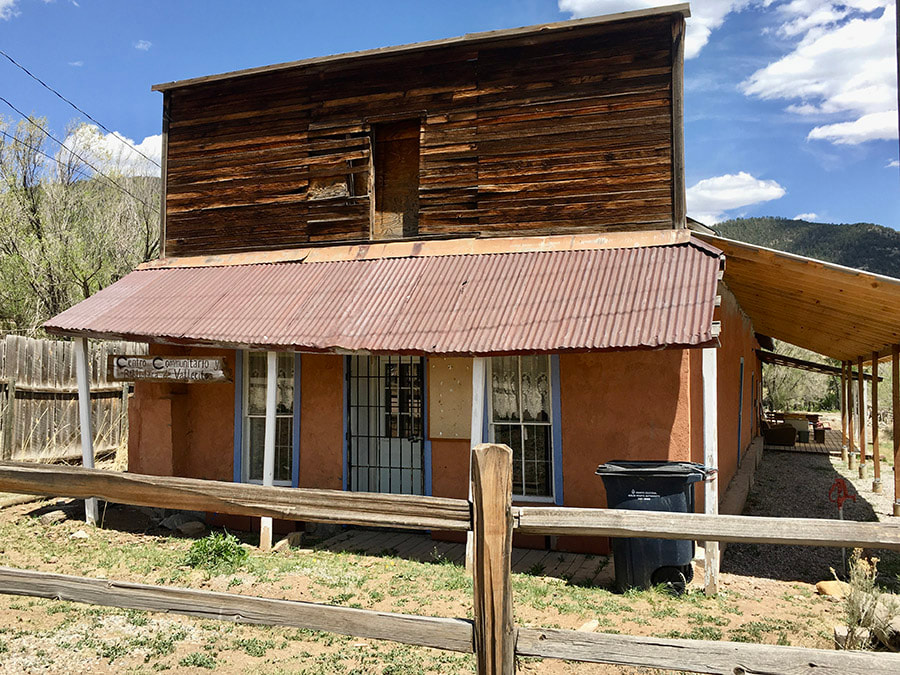
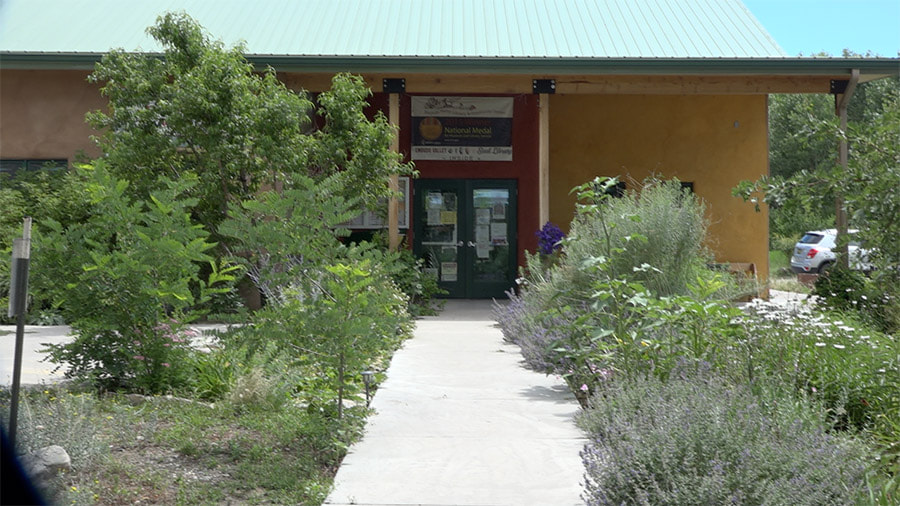
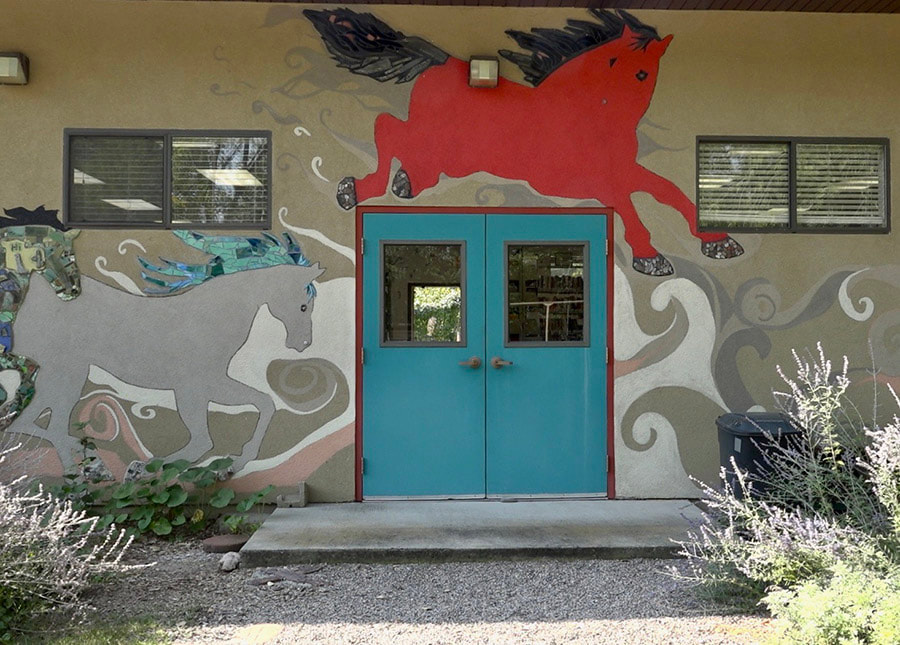
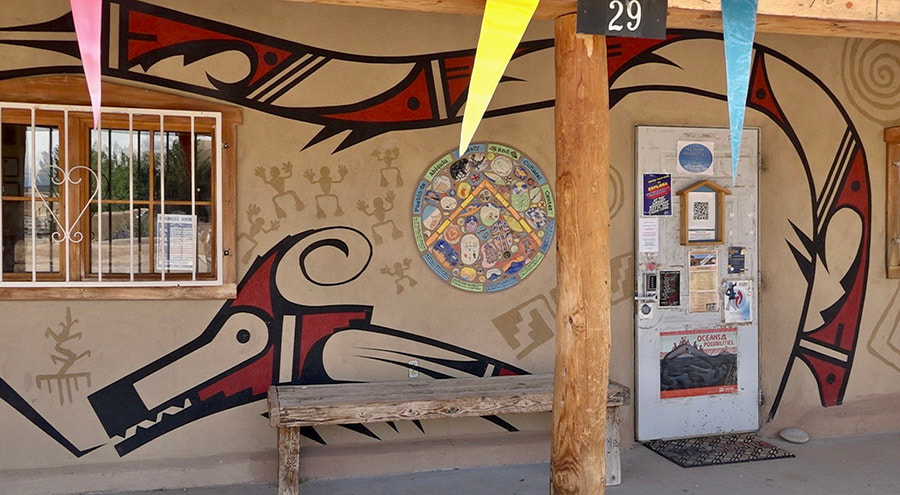
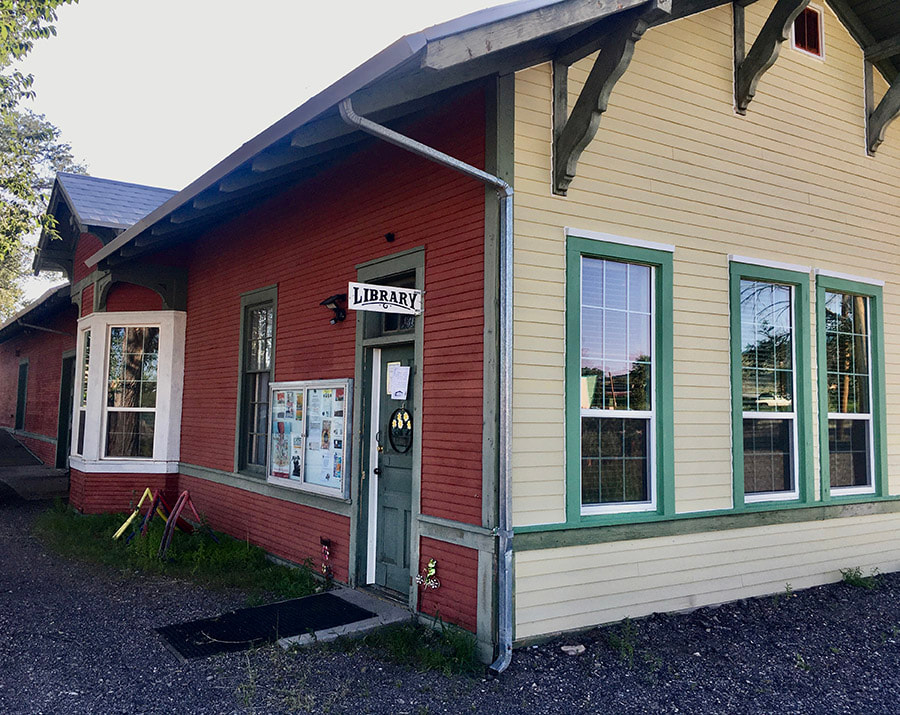
 RSS Feed
RSS Feed